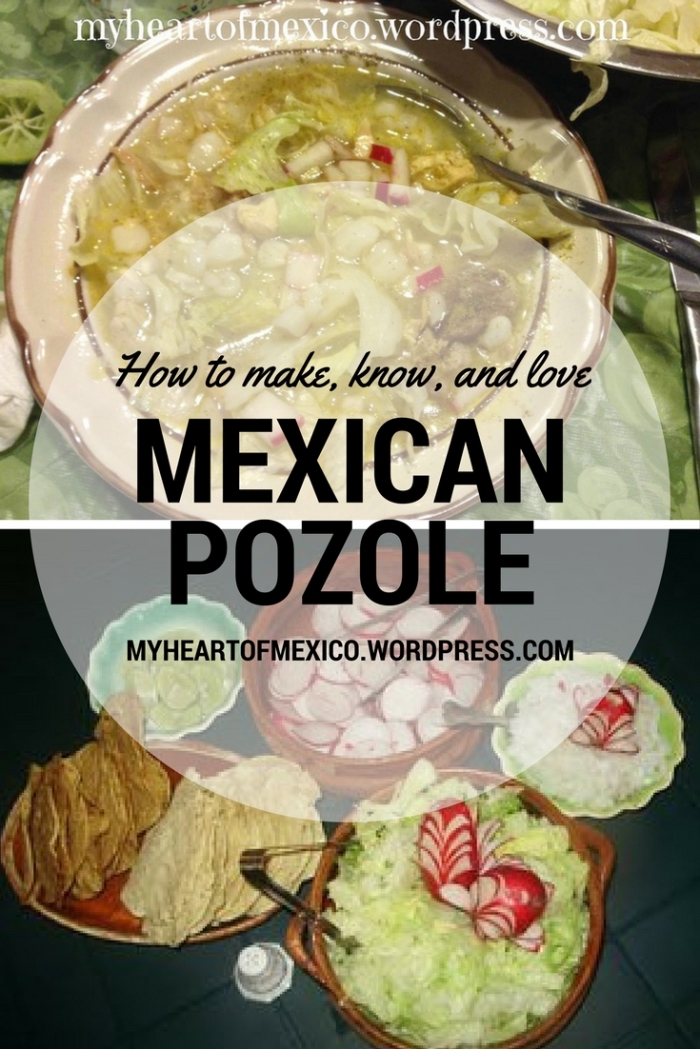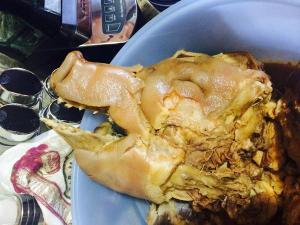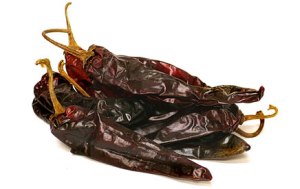Pozole is one of the best Mexican dishes ever, and this post will teach you everything there is to know about it. Not only will you be able to talk about pozole as if you were born and raised in Mexico, but you will also be able to make it like any Mexican abuela. Don’t believe me? Read on!
Follow my blog and fall in love with Mexico!

Click to tweet this post
Introduction To Pozole
Pozole is one of the most typical, traditional Mexican dishes there are, and it is also one of the stars of Mexican cuisine. It is a thick, hearty, heavy, fatty, filling soup that is actually a whole meal in itself. It is also the go-to dish for any kind of party or celebration you can think of- birthdays, reunions, holidays, festivals, or just any Sunday dinner.
But what is pozole, exactly? Well, I could tell you it’s a soup, but it’s really more like a soup with a salad in it or a stew. Does it make sense if I tell you pozole is a soup-salad-stew? Because that’s really what it is. There is nothing else quite like it!
The history of pozole
Pozole has ancient roots. The Aztecs invented the dish many centuries ago, although it was almost certainly very different back then. The word “pozole” comes from the Aztec word “pozolli“, which means “foam“. This word describes the dish perfectly because the corn in it bursts open like foam bubbles when it is cooked. That’s probably how the dish got the name.

Pozole also has some macabre roots. In the 16th century, Friar Bernardino de Sahagun, a Spanish missionary, wrote his famous work The General History of the Things of New Spain. In it, he mentions that pozole was a dish served in honor of the spring god Xipe Totec. It was a sacred, ritual meal, fit only for priests and emperors, and it featured the meat of human sacrifice victims. In fact, rumor has it that pork became the meat of choice for the dish because it’s very similar to human flesh. Creepy, right?

There’s another, less scary version to the ancient pozole recipe. It is said that the dish was actually made with the meat of xoloitzcuintle dogs. This was a hairless kind of Aztec dog that was bred mainly for food. That may sound bizarre, but it’s a well-known fact these little dogs were considered supper back then. Xoloitzcuintle dogs still exist, but fear not! Nobody eats them anymore, of course.

After the conquistadores and missionaries arrived, the pozole recipe changed to include non-native ingredients like pork and chicken. In the end, this became the true nature of Mexican cuisine- the perfect blend of two distinct cultures.
Different Kinds Of Pozole
The recipe for pozole is different depending on where you are in Mexico. There’s red pozole, which comes from the northwest. There’s green pozole, which is made in the southeast. And there’s white pozole, which is typical of Central Mexico. There’s even a seafood pozole in the western coastal region! All of these recipes are slightly different in flavor, but they all share the same basic ingredients.

Pozole Ingredients
The most important ingredient in any kind of pozole is cacahuazintle or hominy corn. This is a special kind of corn, grown only in Mexico, that is very different from the corn you know and love. Cacahuazintle corn has big, fat, white, meaty kernels, and the main reason for its existence is to make pozole. That’s right. Tons of it are grown and harvested for this sole purpose. It’s incredible, I know.

Cacahuazintle corn has to be processed before you can throw it into a pot of pozole. First, it is cleaned and rinsed, and then it is boiled for hours with lime powder. Once it’s soft and cool, it has to be peeled kernel by kernel before it is ready to be used. It’s a painstaking process, and I’m sure many Mexican women toiled through it for centuries on end. Fortunately, nowadays you can just go to the supermarket, buy a bag of pozole corn, and you’re all set to start cooking!

Another classic pozole ingredient is a pig’s head. Yes, you read that right. Traditionally, you should also add a pig’s head to the broth mixture in order to give it a truly distinct flavor. Oh, and you should also include a couple of pig’s feet. No, I am not kidding. This is really how traditional pozole is made! Obviously, you would need a very large pot -or cauldron, maybe- to cook it this way.
So what do you do with the pig’s head and feet after they’re cooked? Well, all of the parts of the pig are edible, so you can just debone and chop everything up. Not a fan? I didn’t think you would like that idea, either. Don’t worry, you can just use regular pork, no head or feet, and the pozole will be just fine.
Basic Pozole Recipe
There are probably as many pozole recipes as there are abuelas in Mexico, but this is one way I know how to cook it.
In a pot, throw together a pound of pork, half a large onion, a garlic clove, a couple of bay leaves, about half a tablespoon of salt, and enough water to cover everything. Bring to a boil and then reduce the heat. Let it cook for about an hour.
When the meat is almost cooked, add the bag of pozole corn to the broth and let it cook a while longer over low heat. The meat and corn both have to get really soft.
Now, the question is what color pozole you want to make- green, white, or red. The difference is the sauce you have to make and the chilies you have to use. Have you made up your mind yet? No? They’re all spicy and delicious. You really can’t go wrong!
Green Pozole Sauce
For this, you need to boil 8 or 10 green tomatillos and a couple of serrano chilies for about 5 minutes. Then, blend them with a chunk of onion, a garlic clove, cilantro, cumin, and an herb called epazote or Mexican tea. After that, cook this mixture with a little bit of olive oil and salt for a few minutes. Finally, strain the sauce and add it to the broth. Let it simmer for about 10 minutes. To make the green sauce thicker, you can add roasted and ground pumpkin seeds. Also, in some regions, green pozole is served with sardines on the side.


Red Pozole Sauce
Boil a couple of ancho chilies and twice as many guajillo chiles for about 5 minutes. Then, blend them with a chunk of onion and a garlic clove. Cook and strain this mixture the same way as the green sauce. Red pozole is usually garnished with diced avocado and served with chicharron on the side.


White Pozole Sauce
Get 5 or 6 ancho chilies. Take out the veins and the seeds, and then soak them in hot water for a while. Just let them soak while you’re cooking the broth. Then, take them out and blend them with a little bit of the water. Strain this mixture into the broth and let it cook for about 10 or 15 minutes. In white pozole, you can also substitute the pork for chicken.
How To Serve Pozole
When everything is done, you’re finally ready to feast on some delicious, yummy pozole. Serve it in deep, large bowls and garnish with finely shredded lettuce, sliced radishes, chopped onion, and a bit of powdered oregano. Oh, and don’t forget to squeeze in some lime juice! While you’re at it, you can munch on some tostadas. I want pozole now!

Enjoy Pozole
The whole family got to enjoy big bowls of pozole on Mexican Independence Day. To drink, my husband and I enjoyed a couple of small glasses of tequila. It doesn’t get any more Mexican than that! The truth is you really haven’t lived until you’ve had a big, steamy bowl of good pozole. Don’t believe me? Try it and you’ll see. I dare you! Buen provecho!



Great post, very informative!! The pigs head scared my daughter when I was reading! Lol still making me crack up!
LikeLiked by 2 people
lol! It scared my little boy too 😀
LikeLiked by 1 person
You’ve definitely peaked my interest in trying this! A non-spicy version however – as my family doesn’t do spicy!
LikeLiked by 1 person
Non-spicy is fine. Actually, my Mom cooked a non-spicy version last week and it was great!
LikeLike
Mmm… thanks! I have always wanted to know how to make Pozole.
LikeLiked by 1 person
I’m glad this was useful for you 🙂 Pozole is not very difficult to make but it requires a lot of ingredients and patience.
LikeLike
This sounds so yummy!! My silly hubs (he’s Texan/Caucasian) has the gall to tell me that I could always use a smaller pot and make smaller portions of stew — like you and my ma would say that is just not how you make stew! A pound of pork — that’s how!!
LikeLiked by 2 people
hahahaha! Pozole in a small pot is Mexican blasphemy! lol 😀 The thing is, you need to make a big pot for the “recalentado”, which is when you reheat everything to continue eating it the next day. In fact, the next day it tastes even better!
LikeLike
I love that you give the history behind the dish! Looks yummy!
LikeLiked by 1 person
I love the introduction and description of all of this! So helpful, and really fun to know. I wish I had enough mouths to feed to make this happen for myself 🙂
LikeLiked by 2 people
That’s pozole is a celebration dish! Glad you enjoye it 🙂
LikeLike
Going to have to try this! Thank you 🙂
LikeLiked by 2 people
let me know how it goes! 😉
LikeLiked by 1 person
Oh! Pig head! I used to love eating the brains. xD
Okay, this pozole sounds interesting. I’ve never seen white corn before. o.o Usual question: what does it taste like?
PS: I love how I can find a bunch of cultural interesting stuff around here!
LikeLiked by 2 people
What does white corn taste like? Hmmm…well, it’s tastes like regular corn but it’s big. Imagine a more solid, not so salty popcorn.
LikeLiked by 1 person
What a fascinating and weird history this dish has! I enjoy your writing so much!:)
LikeLiked by 2 people
Thanks, Colleen! 🙂
LikeLike
Sounds yummy! Thank tou for sharing the history it is very interesting.
LikeLiked by 2 people
You’re welcome 🙂 I’m glad you enjoyed it
LikeLike
My mother in law gave me a Pozole recipe but it did not include a pigs head!!! I enjoyed reading about the origins of this recipe!
LikeLiked by 2 people
Here in Mexico, people say that if pozole doesn’t a pig’s head in it, it is not pozole at all! lol Glad you enjoyed it 🙂
LikeLike
This recipe looks delicious and your directions make it look a lot easier and less intimidating than I would have thought it was by looking at the pictures of the finished product. Will definitely have to try it!
LikeLiked by 2 people
You should! I had mole for dinner yesterday and it was amazing 🙂
LikeLiked by 1 person
lol, it makes the process seem so simple. Pozole is a staple in my mom’s house. Nothing like it when it’s cold outside. We never had the pig’s head but every so often my mom will add the pig’s feet. It freaks my older sister out 🙂
LikeLike
Pig stuff looks freaky but it adds flavor 🙂 Here in Mexico, people say pozole without a pig’s head is not real pozole!
LikeLike
Really interesting stuff – I did an article years ago on hominy which is what pozole is called in Canada and in some parts of the US. Native people have been using the lye or lime technique for centuries and I worked with the Delaware indigenous people in Canada building a plant to prepare the corn. I am a huge fan and will try all the varieties you mentioned. In Canada we can buy canned hominy or dried hominy but as you can see from the piece I wrote it is most often found dried, but I see it here in Mexico in the dairy section with the cheese and yogurt in refrigerated bags. http://www.examiner.com/article/hominy
LikeLiked by 1 person
Thanks for the link to your article! It’s amazing how the indigenous cultures all over the American continent have so many things in common. The history of food is in many ways, the history of the people and their culture. Thanks for visiting!
LikeLike
I am soooo going to try this! You made me really hungry! And I absolutely love pozole!!! 😁😁❤️❤️
LikeLiked by 1 person
Isn’t it the best dish ever? lol 🙂 Thanks for visiting!
LikeLike
You are so great at writing. I actually enjoyed your post and you made me laugh and hungry at the same time. I think it’s time for some pozole this weekend 😁😁😁😁❤️❤️❤️
LikeLiked by 1 person
Yes! Pozole time! lol 😀 I’m glad you liked my post 🙂
LikeLiked by 1 person